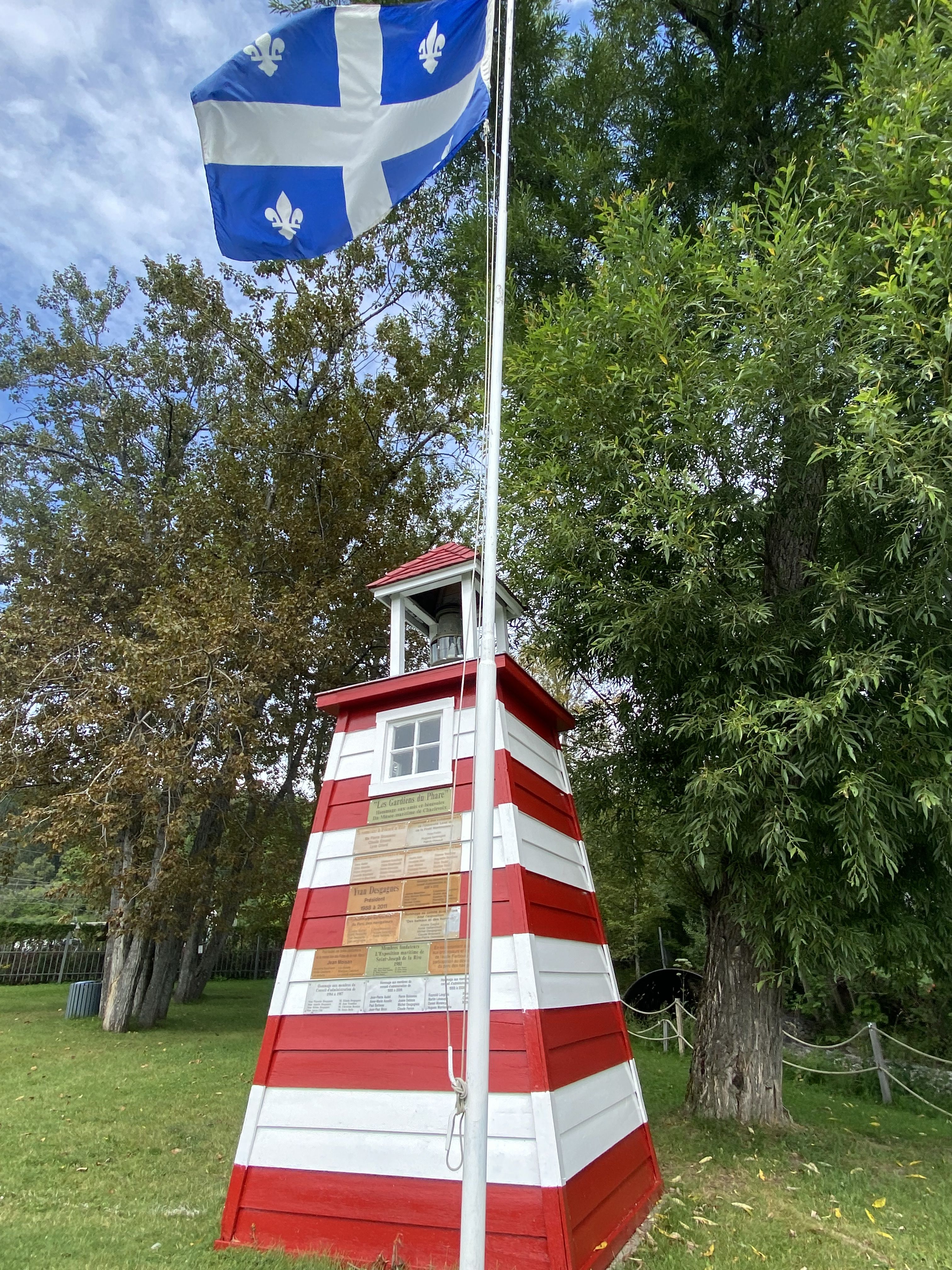
The Schooners of Charlevoix
By Izabela Jaroszynski

The turn off the main road towards Saint-Joseph-de-la-Rive produces a killer view of the St. Lawrence River and a heart-stopping journey down one of the steepest roads I've ever encountered.
Signs along the side remind drivers to check their brakes. I give the brakes of my rental car a few pumps and proceed slowly down the steep hill towards the water.

We are in the heart of Québec's Charlevoix region, in the foothills of the Laurentians. Route 362 out of Baie-St-Paul has so far provided a swoon-worthy drive through the rolling landscape with occasional glimpses of the widening river. But now, as we turn towards the coastal village of Saint-Joseph-de-la-Rive, we have a full view of the water and the almond-shaped Isle-aux-Coudres that sits less than 3 km offshore.
Once we reach the bottom of the hill, the road winds through the village to the ferry terminal where the free ferry takes cars and passengers to the island, a popular summertime excursion.
But a few minutes before the terminal, we pass the entrance to the Musée Maritime de Charlevoix — and it is here that we stop for a morning visit.
It turns out to be a worthy stop, especially if you, like me, enjoy history, nautical lore and a good story.
If you are only familiar with the St. Lawrence River where it meets Lake Ontario in the Thousand Islands region, or in Montreal where it surrounds the city, you might be surprised to find a completely different vibe in eastern Québec.
East of Québec City, the river begins to widen and is infused with the salty waters coming in from the Atlantic until it is more reminiscent of a sea than a river. Its brackish waters support rich marine life, such as porpoises and whales, and have a significant coastal tide.
Before arriving in Charlevoix, I must admit that I never fully appreciated Québec as a maritime province. But driving just an hour and a half east of the province's capital city, I was met with the undeniable briny scent of the salty water and coastal towns where life is inseperable from the sea.
The villages and towns that are nestled along the river's north shore in Charlevoix, tucked in among rolling hills and steep Laurentian mountains, are today connected by road and rail — but this was not always the case.
Driving along these steep foothills, it is easy to imagine how they once posed an impassable barrier and made it necessary for the small communities located along the shore to rely on the river as their primary mode of transportation and connection — as Indigenous peoples had done for millennia.
Charlevoix's history is inseparable from that of the wooden schooner, or goélette. For generations, these handcrafted beauties were not only constructed along the region's shores but created a link and connection between the isolated coastal communities.
The Musée Maritime de Charlevoix showcases this rich history of shipbuilding and coastal navigation. It contains indoor exhibits, outdoor boats to explore, a preserved sawmill and quay, as well as acres of trails that include an adventure course for children made out of shipbuilding materials.
While my travel companions — my three young children — are eager to get outside and climb the boats, I am captivated by the story of Charlevoix's shipping past that is presented within the main building.
Our guide, Claire, is an engaging storyteller. She tells us of how the Marie-Louise, the first schooner built on these shores back in 1793, broke the isolation of people living on the Isle-aux-Coudres and in communities along the mainland; of how craftsmen built hundreds of ships during the 19th century on improvised sites along the Charlevoix shores.
In 1946, a group of locals banned together to build a permanent shipyard in the village so these vessels would have a safe place to spend the long winter months and a sawmill that would make building and repairs easier. It is this shipyard, the Chantiers maritimes de Charlevoix, that houses the museum today.
I'm entralled by the displays of craftsmanship of these boats, the meticulous design models that were created before any wood was even cut. Skills, often passed down from father to son, on how to build these vessels, how to select the wood for them and how to make them watertight, were highly valued. The end results were beautiful and functional ships — carrying necessities to the communities they served.







Photo by Andre Olivier Lyra c/o Tourism Charlevoix
Photo by Andre Olivier Lyra c/o Tourism Charlevoix



Photo by Andre Olivier Lyra c/o Tourism Charlevoix
Photo by Andre Olivier Lyra c/o Tourism Charlevoix

Photo by Andre Olivier Lyra c/o Tourism Charlevoix
Photo by Andre Olivier Lyra c/o Tourism Charlevoix

Claire explains how captains would try to time their fall arrival at the shipyards to be the last ones in because it meant being the first one out in the spring, thus ensuring a longer and more prosperous season.
As wooden boats were slowly phased out in favour of metal ships and roads built to connect these once-isolated communities, schooners disappeared from the St. Lawrence River. The shipyard closed in 1973, permanently ending the era of shipbuilding in Charlevoix.
But this is where my favourite story comes in. As Claire tells me, while shipbuilding and coastal navigation had long been a man's world, it was the women of the community who saved the shipyard from going into disrepair.
Missing the vitality of the shipyard, local women decided to preserve it as a tribute to the wooden schooners and the craftsmen who build them. The museum opened in 1981, saving the historic shipyard from going into disrepair.
Today, the shipyard is designated as a Canadian Historic Site because it is one of the few remaining examples of shipbuilidng from that era. The sawmill is beautifully preserved, the displays are creative and engaging and those that work there are passionate about ensuring the maritime history of this village is not forgotten.
Every inch of this in-situ museum is a love letter to the glory days of the goélette — and I'm here for it.


Photo by Andre Olivier Lyra c/o Tourism Charlevoix
Photo by Andre Olivier Lyra c/o Tourism Charlevoix
You can visit the Musée Maritime de Charlevoix at 305 rue de l'Église in Saint-Joesph-de-la-Rive from May to October.
